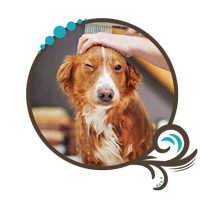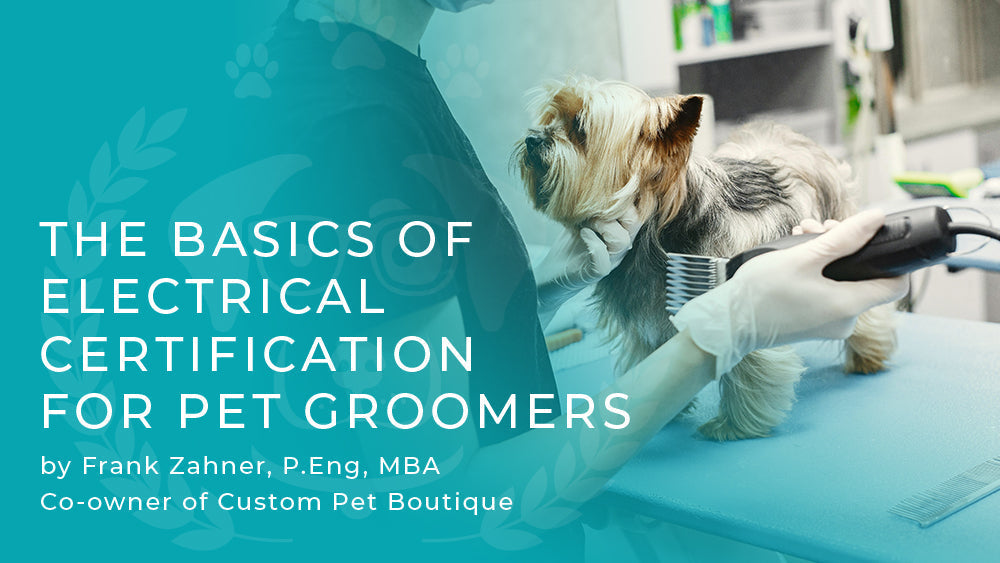We Ship to Canada, the USA, and World Wide!
We Ship to Canada, the USA, and World Wide!
Grooming-Tools
Coat & General Care
- Anti Static, Deshedding & Detangling
- Degreasing & Deep Cleaning
- Hypoallergenic & Tear-less
- Specific Coat Texture (Coarse, Crisp, Fine, Medium & Hairless)
- Vitamin Enriched, Repair, Volumizing & Medicated
- Waterless, Self Rinsing & Dry
- Whitening & Colour Enhancing
- Mixing Bottles & Sprayers
- Sample Packages

Keep your friend clean, smelling great, and looking fabulous with our range of Shampoos, Conditioners, Finishers and Care Products.
- Anti Static, Deshedding & Detangling
- Degreasing & Deep Cleaning
- Hypoallergenic & Tear-less
- Specific Coat Texture (Coarse, Crisp, Fine, Medium & Hairless)
- Vitamin Enriched, Repair, Volumizing & Medicated
- Waterless, Self Rinsing & Dry
- Whitening & Colour Enhancing
- Mixing Bottles & Sprayers
- Sample Packages
Show Supplies
Add description, images, menus and links to your mega menu
A column with no settings can be used as a spacer
Link to your collections, sales and even external links
Add up to five columns
Add description, images, menus and links to your mega menu
A column with no settings can be used as a spacer
Link to your collections, sales and even external links
Add up to five columns

Grooming Safely: Understanding Electrical Certification in the Pet Industry
July 24, 2025 3 min read

By Frank Zahner, P.Eng, MBA – Co-owner, Custom Pet Boutique
Electric grooming tools might make your day smoother—but are they putting your safety at risk? In a landscape filled with convenience and custom products, it's easy to overlook the invisible details that could cost you more than you bargained for. Electrical certification for grooming equipment isn't just a regulatory box to check—it’s a legal and personal responsibility that affects your business, your staff, and your pets.
Why Electrical Compliance Matters
Most grooming professionals use a wide range of electrical tools daily—clippers, dryers, grooming tables, and more. Unfortunately, many of these devices aren’t compliant with Canadian or U.S. electrical codes. What does that mean for you?
If you plug it into a wall, it's considered a permanent fixture, and legally, it must meet electrical code requirements. As a business owner, you bear the liability for using non-compliant equipment, and that’s no small matter. Should an accident occur, the legal and financial consequences fall squarely on your shoulders—not the supplier’s.
Who Enforces the Rules?
You may assume compliance is handled by manufacturers or sellers, but that’s not always the case. Municipalities are the enforcers of electrical codes, especially when permits are involved. Certified tradespeople won’t install non-compliant equipment—meaning if you're doing DIY installations without inspections or permits, you’re bypassing not only safeguards but legal requirements.
Here’s a sobering fact: non-compliant equipment can void your insurance. Even if the equipment works, if it’s not certified, any related claim could be denied. Worst of all, some vendors still legally sell non-compliant devices, leaving the burden of legality and safety on you.
The Knowledge Gap
One of the biggest problems in the industry is simple ignorance:
- Many vendors and customers don’t know the law.
- Few can accurately verify certification.
- Some vendors intentionally mislead buyers.
- And sadly, some customers don't care—or don’t know they should.
But electrical certification protects everyone involved—from groomers and employees to the pets themselves. It ensures the devices are built and tested to meet safety standards.
Common Tools That Require Certification
Here are the types of grooming tools most often found in violation:
- Grooming tables
- Bath tubs
- Clippers and clipper charging stations
- Dryers
- Other grooming accessories and miscellaneous tools
When shopping, don’t just take a vendor’s word for it. Always request proof of certification.
How to Recognize Certified Equipment



Look for a certification symbol on the device’s nameplate—ideally on the control panel, base, or power cord label. This mark should come from a reputable certification agency. Some reliable symbols include:
- UL
- ETL
- CSA
- MET
- TUV
- QAI
- SGS
If you see “C” and “US” in the corners of the symbol, that means the equipment complies with both Canadian and U.S. standards. Note: the “CE” mark relates to European packaging standards—it does not qualify as North American electrical compliance.
Documentation is Just as Important
Certification isn't only about symbols—it should come with proper documentation:
- A title page showing the complete assembly and the certification mark
- An index listing all components
- Individual documentation of each component’s certification
- A registration number tied to a searchable database on the certifying agency’s website

One certified component does not mean the whole product is compliant. An example in the grooming space is a control box that bears a UL certification but doesn’t guarantee the surrounding assembly meets full certification.
What You Can Do
Don’t leave safety to chance. Here's how to proactively verify equipment compliance:
- Request a photo of the nameplate showing the certification symbol.
- Ask for supporting documentation.
- Consult a professional who understands electrical codes and can review documents with you.
- If the seller can’t or won’t provide certification? Walk away.
Final Thoughts
North America operates on single-phase, 120V, 60Hz power. Any motor or control designed outside those specifications might not function—or could pose serious hazards.
If groomers consistently demand certified equipment, vendors will stop supplying substandard goods. Ultimately, it's baffling that anyone would accept responsibility for risks they can't properly evaluate.
Don’t be that customer. Be the professional who keeps safety front and center—for your team, your clients, and your pets.
Subscribe
Sign up to get the latest on sales, new releases and more …


